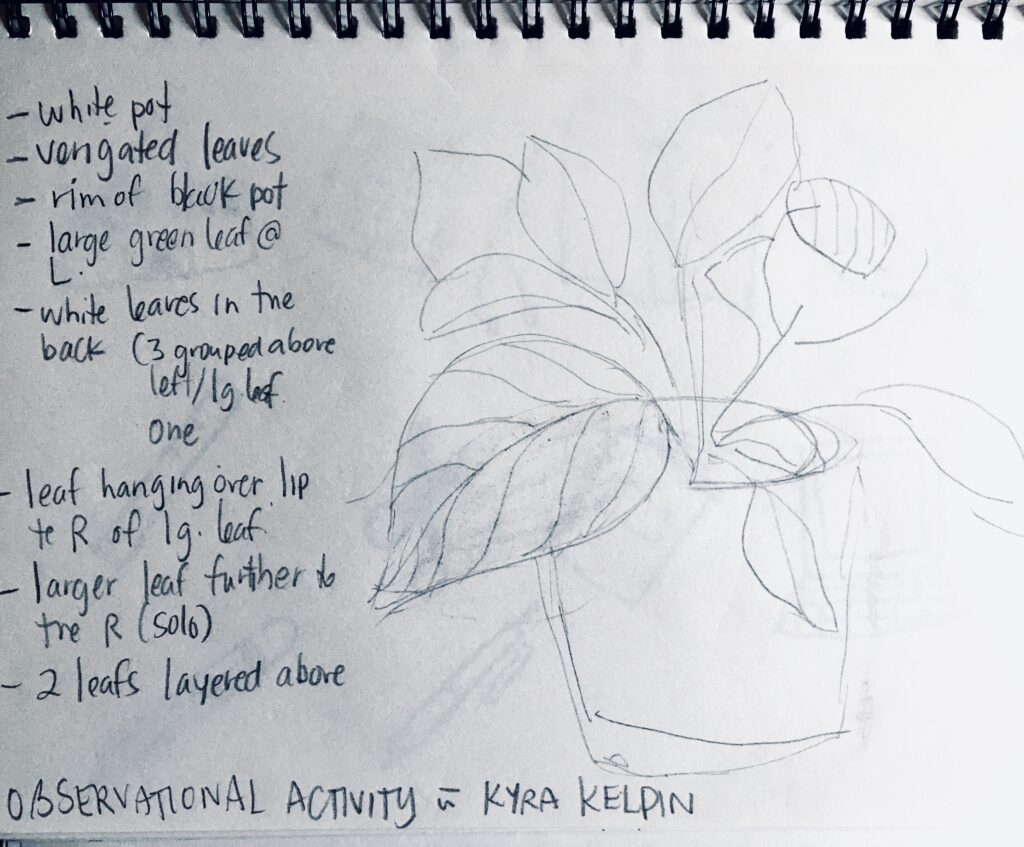
J.Riddell Matte (2021). Plant Watching; An Observation. (graphite on paper)
The other day, I looked at a house plant for 20 minutes, over zoom. I wrote down a brief description of the plant and then, I attempted to draw it [see above]. At the end of a very long first week of summer courses this was a welcome moment to breath.
I enjoyed this activity, not only because making art is my happy-place , but because it required my absolute presence in that moment. In our busy lives, I appreciate this type of low-risk activity that slows down the world around us and allows us to still ourselves. I will most certainly be using it in my future practice. I think that it would be wonderful as a mindfulness activity, art warm-up and as part of an inquiry or a place/land based unit of study. With all of that in mind, observation is at the core of this activity, and this is a valuable tool for educators. Observation is a muscle that most of us have to build, especially in a classroom with 20+ young people and this activity acts as a skill-builder but also as a reminder of the importance of applying observation within our classroom routines.
Observation allows educators to gain information around…..
Students interest, preferences, skills and accomplishments. Their personalities and temperaments, levels of cognitive and social development, as well as their goals and strategies for creating desired effects. [The Importance of Observation in Early Education]
When we make the effort to learn more about who each of our students are, we are able to build better relationships, foster a culture of kindness and inclusiveness within our classrooms, as well as design our learning plans to best meet their needs and interests as learners. Therefore, observation plays and important role in our ability, as educators, to successfully support diverse learners in our classroom communities.
Leave a Reply
You must be logged in to post a comment.